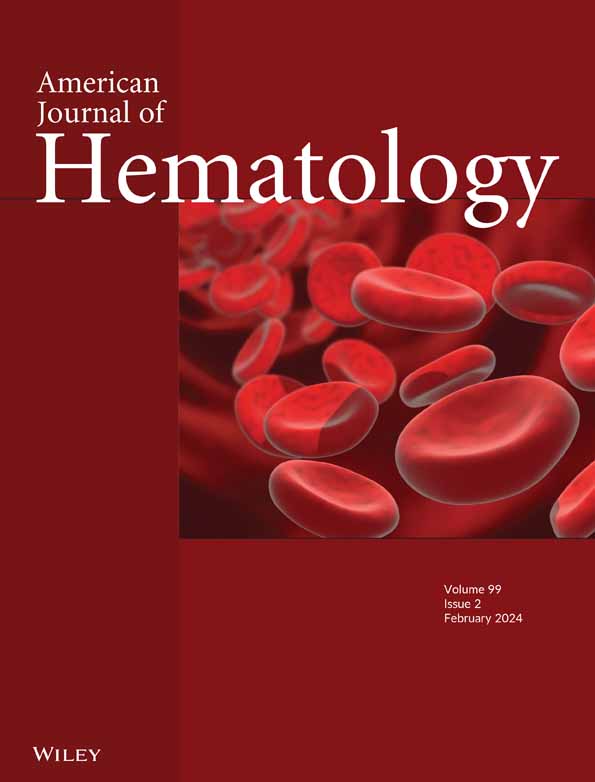Sickle Cell Diastolic Cardiomyopathy and Mortality Risk: A Novel Echocardiographic Framework for Prognostic Stratification
IF 9.9
1区 医学
Q1 HEMATOLOGY
引用次数: 0
Abstract
Cardiovascular complications are the leading cause of mortality in sickle cell anemia (SCA) patients. While extensive data have identified diastolic dysfunction (DD) to increase morbidity and mortality, the unique hemodynamic conditions inherent to SCA challenge the current recommendations to assess diastolic function. Thus, there is an urgent need to refine the echocardiographic definition of DD to improve risk stratification and therapeutic strategies in SCA patients. We analyzed data from the French multicentric Etendard cohort and compared them with an age‐ and sex‐matched control group from the Copenhagen City Heart Study (CCHS). We focused on left ventricular diastolic parameters, specifically lateral e′ velocity (e′ lat), E/e′ ratio, and indexed left atrial volume (LAVi), assessing their association with clinical outcomes over a 12‐year follow‐up. Etendard SCA patients (镰状细胞舒张性心肌病和死亡风险:一种新的预后分层超声心动图框架
心血管并发症是镰状细胞性贫血(SCA)患者死亡的主要原因。虽然大量数据已经确定舒张功能障碍(DD)会增加发病率和死亡率,但SCA固有的独特血流动力学条件对目前评估舒张功能的建议提出了挑战。因此,迫切需要完善超声心动图对DD的定义,以改善SCA患者的风险分层和治疗策略。我们分析了来自法国多中心Etendard队列的数据,并将其与来自哥本哈根城市心脏研究(CCHS)的年龄和性别匹配的对照组进行了比较。我们关注左心室舒张参数,特别是侧速(e ' lat)、e /e比值和指数左房容积(LAVi),在12年的随访中评估它们与临床结果的关系。与CCHS对照组(n = 672)相比,标准SCA患者(n = 379)早期舒张功能受损。这在年轻SCA患者(n = 252,年龄≤38岁)中尤为明显,其e′迟与预后相关(p = 0.01),最佳截断值低于11 cm/s。事实上,年轻SCA合并DD患者的12年死亡率是没有DD的SCA患者的4倍(16% vs. 4%, p <;0.001)。此外,e ' late与6分钟步行试验、NT亲BNP水平、舒张压和乳酸脱氢酶水平相关。在年轻SCA患者中,我们的数据有助于完善舒张功能障碍的诊断评估。我们强调了低于11cm /s的外侧流速的预后价值,以及它与心脏损伤的关键因素(如溶血和全身血管病变)的关系。试验注册:ClinicalTrials.gov标识符:NCT00434902
本文章由计算机程序翻译,如有差异,请以英文原文为准。
求助全文
约1分钟内获得全文
求助全文
来源期刊
CiteScore
15.70
自引率
3.90%
发文量
363
审稿时长
3-6 weeks
期刊介绍:
The American Journal of Hematology offers extensive coverage of experimental and clinical aspects of blood diseases in humans and animal models. The journal publishes original contributions in both non-malignant and malignant hematological diseases, encompassing clinical and basic studies in areas such as hemostasis, thrombosis, immunology, blood banking, and stem cell biology. Clinical translational reports highlighting innovative therapeutic approaches for the diagnosis and treatment of hematological diseases are actively encouraged.The American Journal of Hematology features regular original laboratory and clinical research articles, brief research reports, critical reviews, images in hematology, as well as letters and correspondence.

 求助内容:
求助内容: 应助结果提醒方式:
应助结果提醒方式:


